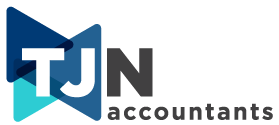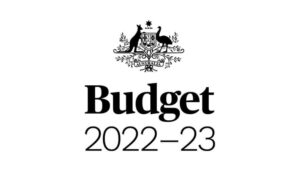
The legislation for the JobKeeper Payment received Royal Assent on Thursday, 9 April 2020. The Rules regarding the operation and implementation of the JobKeeper Payment have also been released by Treasury.
A business may be entitled to the JobKeeper payment for the business owner or a nominated owner regardless of whether the business has eligible employees. An entity is only entitled to payment for one business owner.
We have summarised the application of the JobKeeper payment below for business owners/operators. Please do not hesitate to contact us if you have any questions about the application of the JobKeeper payment to your business.
Please note, we also have a separate post regarding the application of the JobKeeper Payment for employers – see here.
Eligibility
An entity will be eligible to participate in the JobKeeper Payment scheme where:
- On 1 March 2020, it carried on a business in Australia; AND
- It satisfied the decline in turnover test or the alternative decline in turnover test; AND
- It satisfied the integrity rules; AND
- The individual is the eligible business participant for the entity for the fortnight; AND
- It has provided notification to the ATO that they are electing to participate in the JobKeeper Scheme; AND
- It has not notified the ATO that they no longer wish to participate in the scheme.
Decline in Turnover Test (30% decline)
The entity must show that they have had a decline in their turnover of at least 30% before they can be entitled to the JobKeeper Payment.
Once the test is satisfied, there is no requirement to retest in later periods. If you do not qualify for the JobKeeper Payment in your first test period, you can test in later months to see if you meet the test.
Test periods
You can calculate the decline in turnover based on a month or a quarter. The entity can choose the relevant comparison period.
The relevant testing periods are:
Monthly test periods
- March 2020
- April 2020
- May 2020
- June 2020
- July 2020
- August 2020
- September 2020
Quarterly test periods
- 1 April 2020 to 30 June 2020
- 1 July 2020 to 30 September 2020
Nguyen Industries assesses its eligibility for JobKeeper payments on 3 July 2020 based on a projected GST turnover for the quarter beginning on 1 July 2020 of $80 million from its business activities. The corresponding period is the quarter beginning 1 July 2019 for which it had a current GST turnover of $100 million. The July 2020 quarter turnover falls short of the July 2019 quarter turnover by $20 million which is 20% of the July 2019 quarter turnover. This does not exceed the specified percentage of 30%. Nguyen Industries does not satisfy the Decline in Turnover Test.
Alternative Decline in Turnover Test
The Alternative Decline in Turnover Test applies if there is not an appropriate relevant comparison period in 2019.
This may be the case of a new business, started for example in January 2020, or a business that made a business acquisition in 2020. In both examples, the basic test may not accurately reflect the downturn in activity that the business has suffered.
Where the Tax Commissioner is satisfied that there is no such comparison period in 2019, or it is not an appropriate relevant comparison period, the Commissioner may determine an alternative decline test.
Example – Satisfying the alternative decline in turnover test – comparison period not appropriate
Camille’s Farms carries on a farming business and retail flower sales in Australia. It was subject to a severe drought from 2018 until September 2019 that reduced the amount of flowers it could grow. It returned to normal crop output in January 2020. Its retail flower sales became significantly affected in March 2020.
It assesses its eligibility for JobKeeper payments on 3 July 2020 based on a projected GST turnover from its farming activities for the quarter beginning 1 July of $2,000,000. The corresponding period is the quarter beginning 1 July 2019 – a period in which Camille’s Farms was severely affected by drought. Because of the effects of the drought, Camille’s Farms had a much lower than usual turnover for the quarter beginning 1 July 2019 of $2,500,000. The July 2020 quarter turnover falls short of the July 2019 quarter turnover by $500,000, which is 25% of the July 2019 quarter turnover. This does not exceed the specified percentage of 30%, so the decline in turnover is not satisfied.
However, because of the effects of the drought on farming businesses, the Commissioner is satisfied that there is not an appropriate relevant comparison period for an entity that carried on a farming business. Instead, for these entities, the Commissioner determines an alternative test for which the relevant comparison period is the corresponding quarter in 2017. In the quarter beginning 1 July 2017, Camille’s Farms had a current GST turnover of $4,000,000. This represents a shortfall of 50% when compared to the projected GST turnover for the quarter beginning 1 July 2020. This exceeds the specified percentage of 30%, so the alternative decline in turnover test is satisfied.
Example – satisfying the alternative decline in turnover test – new business
Seb Tech is a start-up technology company that began carrying on a business on 1 October 2019 selling its product to a range of businesses including cafes and restaurants. Despite strong initial sales, its sales declined substantially from March 2020. It assesses its eligibility for JobKeeper payments on 15 April 2020 based on a projected GST turnover for April 2020 of $15,000 from its technology business. However, because Seb Tech did not begin to carry on a business until 1 October 2019, there is no corresponding period in 2019 that applies.
As there is no corresponding comparison period in 2019, the Commissioner determines an alternative test under which the relevant comparison period is teh average of the actual GST turnover in all of the months in which the business was being carried on prior to the turnover test period.
In October 2019 to March 2020, Seb Tech had an average monthly GST turnover of $30,000. This represents a shortfall of 50% when compared to its projected GST turnover for April 2020 of $15,000. This exceeds the specified percentage of 30%, so the alternative decline in turnover is satisfied.
Contrived arrangements
If an entity deliberately enters into contrived arrangements with the sole or dominant purpose of reducing their turnover in order to gain access to JobKeeper payments, they will not be entitled to the payment or increased payment and general interest charge will apply to the overpayment.
Administrative and criminal penalties are also likely to apply to the parties involved in such schemes.
Integrity rules
The JobKeeper Payment for business participants/owners is intended to support active businesses only. As such, business participants/owners will only be entitled to claim the JobKeeper payment where they satisfy the following conditions:
- The entity had an ABN on 12 March 2020; and
- Either:
- Income tax returns:
- The entity had an amount included in its assessable income in the 2018-19 income year in relation to carrying on a business; and
- The Tax Commissioner had notice of this income on or before 12 March 2020; or
- Business activity statements:
- The entity made a taxable supply in a tax period that started on or after 1 July 2018 and ended before 12 March 2020; and
- The Commissioner had notice on or before 12 March 2020 that the entity had made the taxable supply.
- Income tax returns:
Essentially, the business entity needs to have either lodged its 2019 tax return prior to 12 March 2020 or have at least one BAS lodged for the period between 1 July 2018 and 28 February 2020. The income tax return and/or BAS need to declare business income. Entities that are behind in their lodgement may find they are not entitled to claim the JobKeeper Payment for their business owner.
Eligible business participant
An individual is an eligible business participant if:
- the individual is not employed by the entity at any time in the fortnight; and
- the individual is actively engaged in the business carried on by the entity; and
- on 1 March 2020 the individual was aged 16 years or over; and
- on 1 March 2020, the individual was an Australian resident or a tax resident and was the holder of a Subclass 444 (Special Category) visa; and
- notice was provided by the individual that they will be the nominated eligible business participant for the entity; and
- the individual has not given notice to any other entity (or the Commissioner) for participation in the JobKeeper Payment scheme; and
- no other individual has been reported as the eligible business participant for the entity; and
- the individual is one of the following:
If the entity is a … | The individual must be … |
|---|---|
Sole Trader | The Entity |
Partnership | A partner in the partnership |
Trust | An adult beneficiary of the trust |
Company | A shareholder in or a director of the company |
ATO notification - election to participate
An entity needs to notify the ATO in approved form of their election to participate in the scheme before the end of the fortnight (for the entity to be entitled to a payment for that fortnight).
For entities that wish to participate in the first or second JobKeeper payment (that is, the fortnights commencing 30 March 2020 and 13 April 2020), the entity has until the end of the second JobKeeper fortnight (ie. 26 April 2020) to provide the Commissioner with its election to participate.
(At the time of writing this 2:00pm, Sunday 12 April 2020, the approved form had not yet been released. We will update this page once the approved form has been released.)
Fortnight Starting | Last Date for ATO Notification |
|---|---|
30 March 2020 | 26 April 2020 |
13 April 2020 | 26 April 2020 |
27 April 2020 | 10 May 2020 |
11 May 2020 | 24 May 2020 |
25 May 2020 | 7 June 2020 |
8 June 2020 | 21 June 2020 |
22 June 2020 | 5 July 2020 |
6 July 2020 | 19 July 2020 |
20 July 2020 | 2 August 2020 |
3 August 2020 | 16 August 2020 |
17 August 2020 | 30 August 2020 |
31 August 2020 | 13 September 2020 |
14 September 2020 | 27 September 2020 |
Application and operation
Receipt of payment from ATO
Where the Tax Commissioner is satisfied that an entity is entitled to a JobKeeper payment, the Commissioner must pay $1,500 to the entity for its business participant. The Commissioner must generally make the payment no later than 14 days after the end of the calendar month in which the fortnight ends.
** It is important for entities to check that its bank account details with the ATO are correct.We also understand that the payment will not be used to offset any existing ATO liabilities of the entity.
Monthly reporting
Entities participating in the JobKeeper scheme will be required to report monthly to the ATO. The entity will be required to report:
- its current GST turnover for the reporting month; and
- its projected GST turnover for the following month.
This information does not affect an entity’s eligibility including in respect of the decline in turnover (which only needs to be satisfied once). It is intended to ensure that there is good information on which to assess the economic impact of the Coronavirus on a monthly basis across Australia.
DISCLAIMER: The information in this article is general in nature and is not a substitute for professional advice. Accordingly, neither TJN Accountants nor any member or employee of TJN Accountants accepts any responsibility for any loss, however caused, as a result of reliance on this general information. We recommend that our formal advice be sought before acting in any of the areas. The article is issued as a helpful guide to clients and for their private information. Therefore it should be regarded as confidential and not be made available to any person without our consent.

Jeanette has over 20 years experience as an accountant in public practice. She is a Chartered Accountant, registered tax agent and accredited SMSF Association advisor. When she is not helping business owners grow their empires, you will likely find her out running on the trails or at the gym. Book in to see Jeanette today.




